Species Profile
Meet the Long-tailed Duck: Vocal, Elegant, and Made for the Arctic
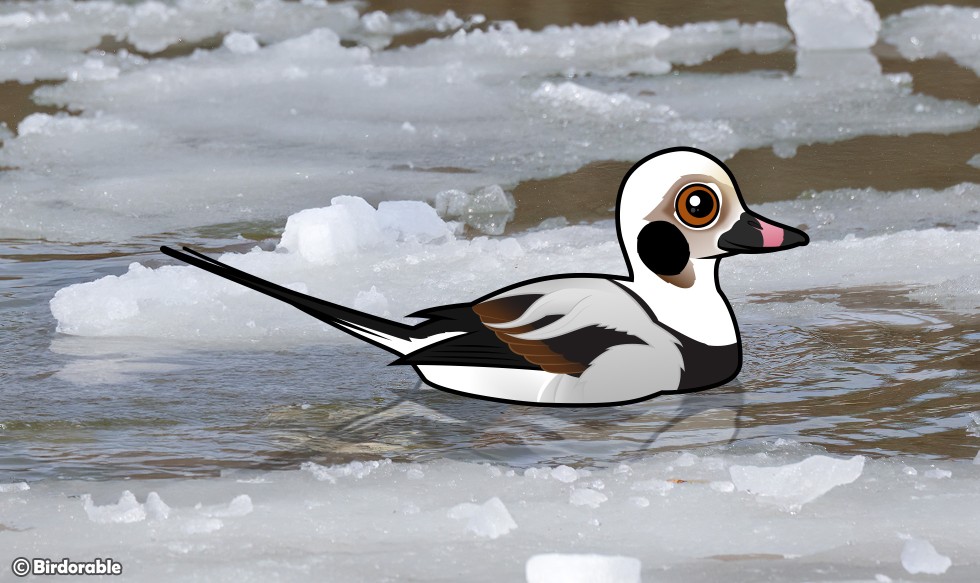
The Long-tailed Duck is a medium-sized sea duck with a distinctive appearance that changes dramatically between seasons. During the breeding season, males sport a mostly dark plumage with a striking white face and a long, slender tail that can measure up to 10 inches, accounting for about half of the bird’s total length. The females and non-breeding males, however, have a more muted coloration, with a combination of browns and whites. The seasonal plumage change is one of the most noticeable features of this species and adds to their charm.
One of the most interesting aspects of Long-tailed Ducks is their vocalizations. These ducks are highly vocal, particularly during the winter months when they are often heard before they are seen. Their calls have a melodic, almost laughing quality, often described as "ow, ow, ow" or "ah-oh-leee."
Long-tailed Ducks are exceptional divers, a necessary adaptation for their Arctic breeding habitat. They can dive up to 200 feet below the surface to forage for food, which is deeper than most other diving ducks. Their diet primarily consists of aquatic invertebrates, small fish, and crustaceans, which they find on the sea floor. During the summer breeding season, they may also consume insects and plant material. Their ability to dive to such depths is aided by their relatively small wings, which make them agile underwater but give them a somewhat labored flight above the surface.
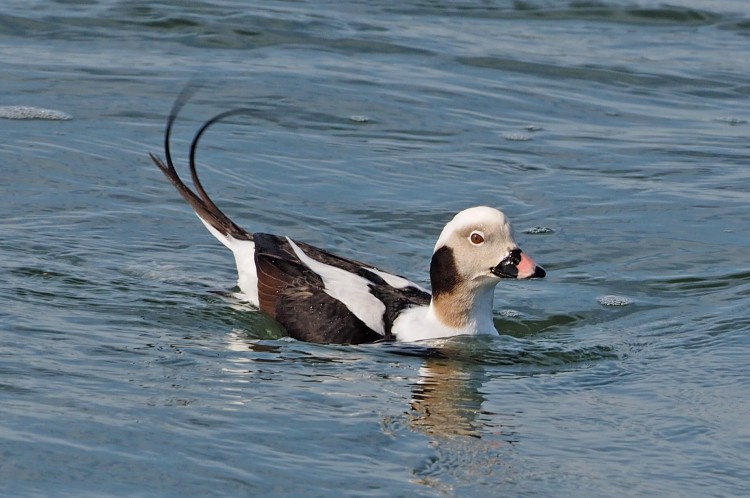
Non-breeding Male Long-tailed Duck
by Judy Gallagher (CC BY 2.0)
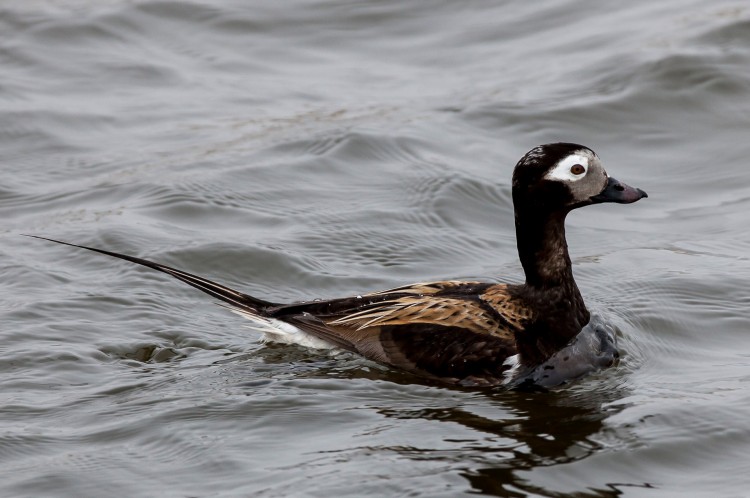
Breeding Male Long-tailed Duck
by Bureau of Land Management (CC BY 2.0)
These ducks breed in the tundra regions of the Arctic, where they nest on the ground near water. The female lays a clutch of 6 to 9 eggs, which she incubates for about three weeks. Only the female develops a brood patch. After hatching, the precocial ducklings are quickly led to water by the female, where they begin feeding and learning to dive. The young fledge at around 35 to 40 days old but remain with their mother for some time after.
In winter, Long-tailed Ducks migrate to coastal ocean waters, including those off the northern United States, Canada, and parts of Europe and Asia. They often gather in large flocks or mixed flocks with other waterfowl.
While the Long-tailed Duck is not currently considered endangered, it does face challenges from habitat loss, climate change, and pollution. The melting of Arctic ice, for example, threatens their breeding grounds, and oil spills can have devastating effects on their coastal habitats. General conservation efforts are crucial to ensuring the survival of this remarkable species, including protecting their breeding and wintering habitats and monitoring population trends.
If you’re lucky enough to live near their wintering grounds, keep an eye (and an ear) out for these distinctive ducks. Their graceful appearance, impressive diving skills, and cheerful calls make them a highlight of any birdwatching excursion. And if you're new to birdwatching, the Long-tailed Duck is a fantastic species to add to your life list.






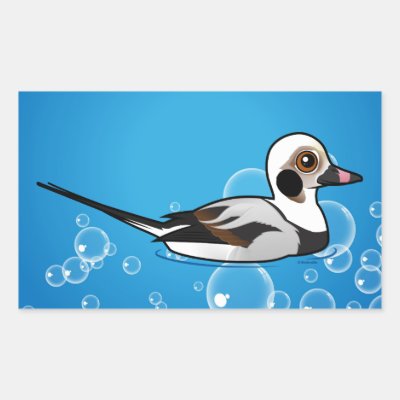





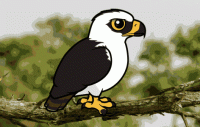
Comments
Leave a comment
Thank you!